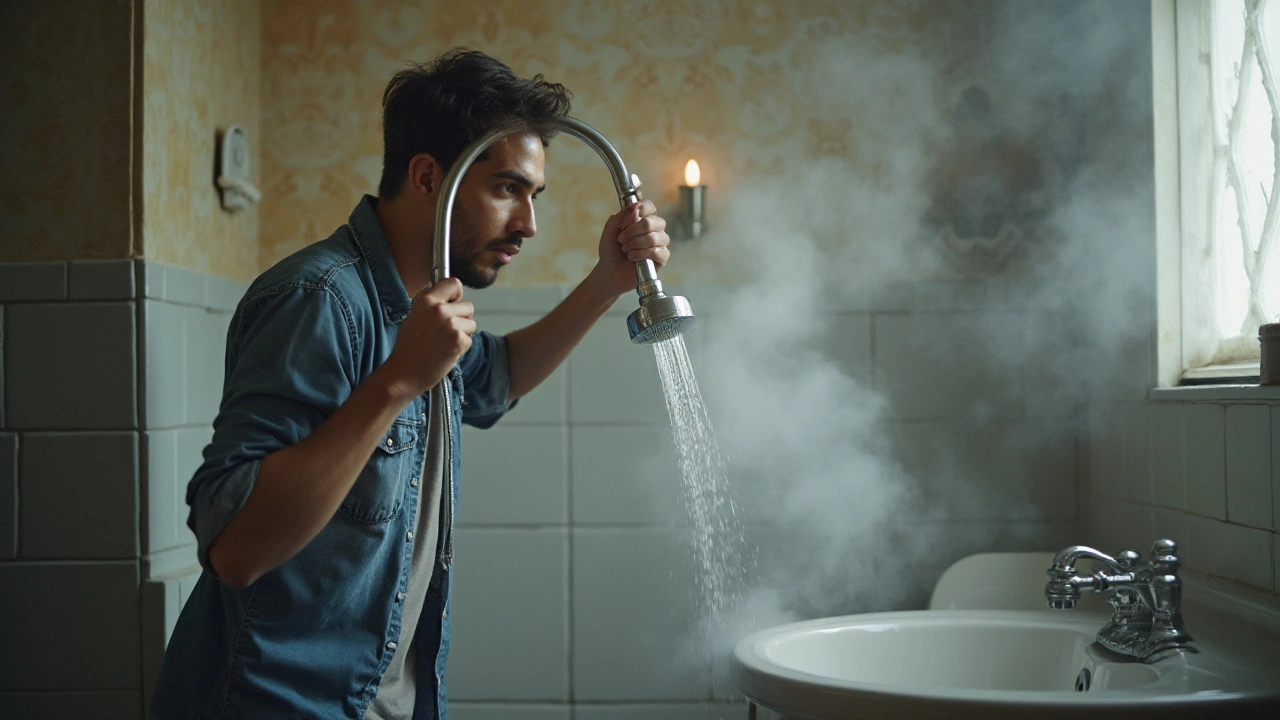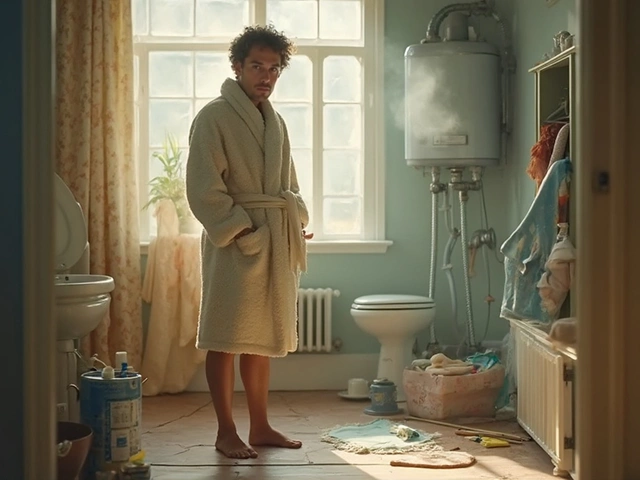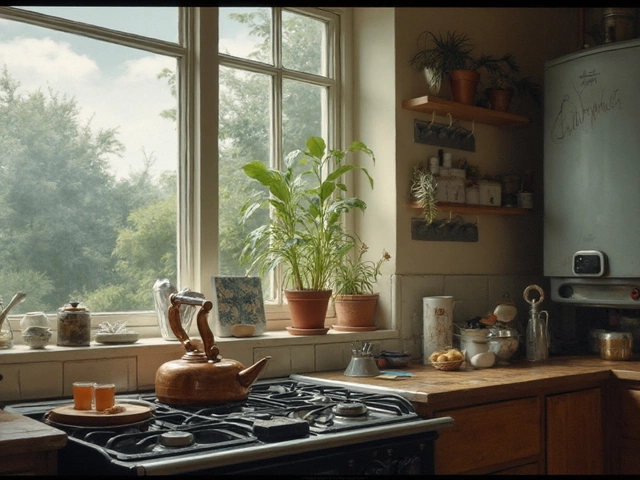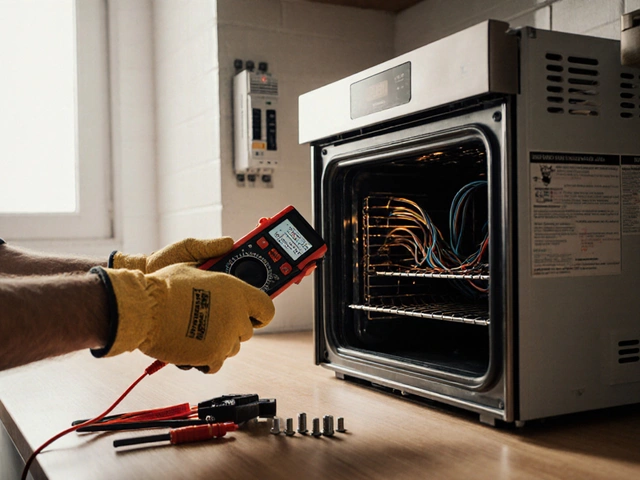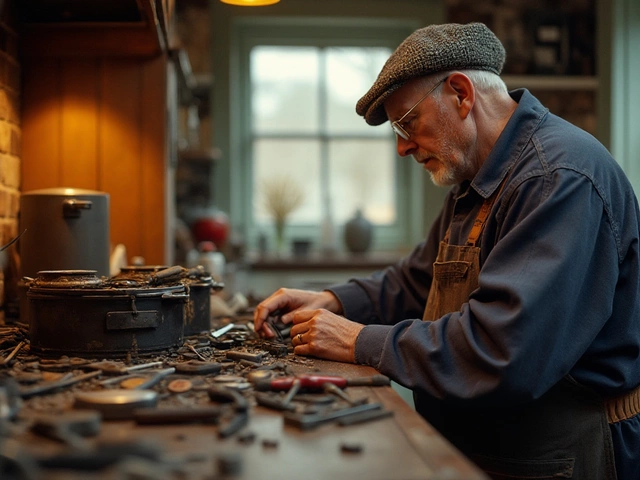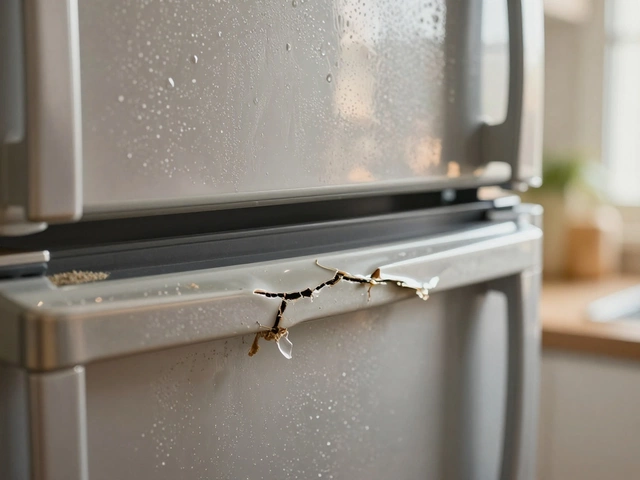Few things are as frustrating as stepping into a cold shower when hot water is flowing freely from the sink. It begs the question: why does this discrepancy occur? A variety of factors could be at play, and understanding them can help bring comfort back to your daily routine.
Whether it's an issue with your water heater, a glitch in your plumbing system, or something else entirely, identifying the root cause is key. Take a moment to explore what's happening behind the scenes with your home's hot water system.
- Common Causes of Inconsistent Water Temperature
- Troubleshooting Water Heater Problems
- Simple Fixes You Can Try at Home
- When to Call a Professional
Common Causes of Inconsistent Water Temperature
Inconsistent water temperature, especially in the shower, can be maddening, particularly on a brisk morning. Understanding why your shower problem occurs while your sink enjoys a steady flow of warm water can provide not just immediate relief but also long-term solutions. A frequent culprit can be the water pressure-balancing valve or mixer, which plays a crucial role in regulating the blend of hot and cold water. These valves can wear out over time or fail due to sediment build-up, leading to an erratic shift from hot to cold. This problem is more common in regions with hard water where minerals accumulate inside the plumbing.
Moreover, the distance between your water heater and bathroom can play a surprising part in this mystery. The farther your water heater is from your shower, the more time it takes for hot water to reach its destination. In some cases, this can cause an initial blast of cold water until the pipeline fills with warmer liquid. The configuration of the house plumbing can silently lead to such issues that are often overlooked by many homeowners.
Thermostat Malfunctions
Another often-overlooked issue can be a malfunctioning thermostat within the water heater. If it's set too low, or it’s out of order, the temperature of the water could be improperly regulated. A significant clue to this could be your hot water's erratic behavior in other areas of the house, albeit not as noticeable as the shower. Resetting it to the recommended temperature—usually around 60 degrees Celsius—may resolve this issue. Understanding these technical elements doesn’t require plumbing expertise; sometimes, a little tweak can go a long way.
"Ensuring your thermostat functions correctly might alleviate a lot of homeowner headaches," mentions Johnathan Meyers, a renowned expert in residential plumbing from the National Plumbing Foundation.
Faulty Shower Cartridge
Lastly, don’t overlook the shower cartridge. This tiny, yet vital piece is a major factor when it comes to controlling water temperature. If mineral accumulation or deformation occurs, it can cause either leaks or water being stuck at a single temperature. Replacing a degraded cartridge often rectifies the disparity in temperature between the sink and the shower. Many modern showers use thermostatic shower valves, which can be quite sensitive to changes in water flow or pressure. If one experiences unpredictable temperature shifts in the shower but not at the sink, it’s worthwhile to examine the shower cartridge.
Letting these issues go unresolved not only affects comfort but can lead to more significant problems, complicating what could initially be a simple fix. Pay attention to what the system attempts to tell you, because it might save you both time and money down the track.
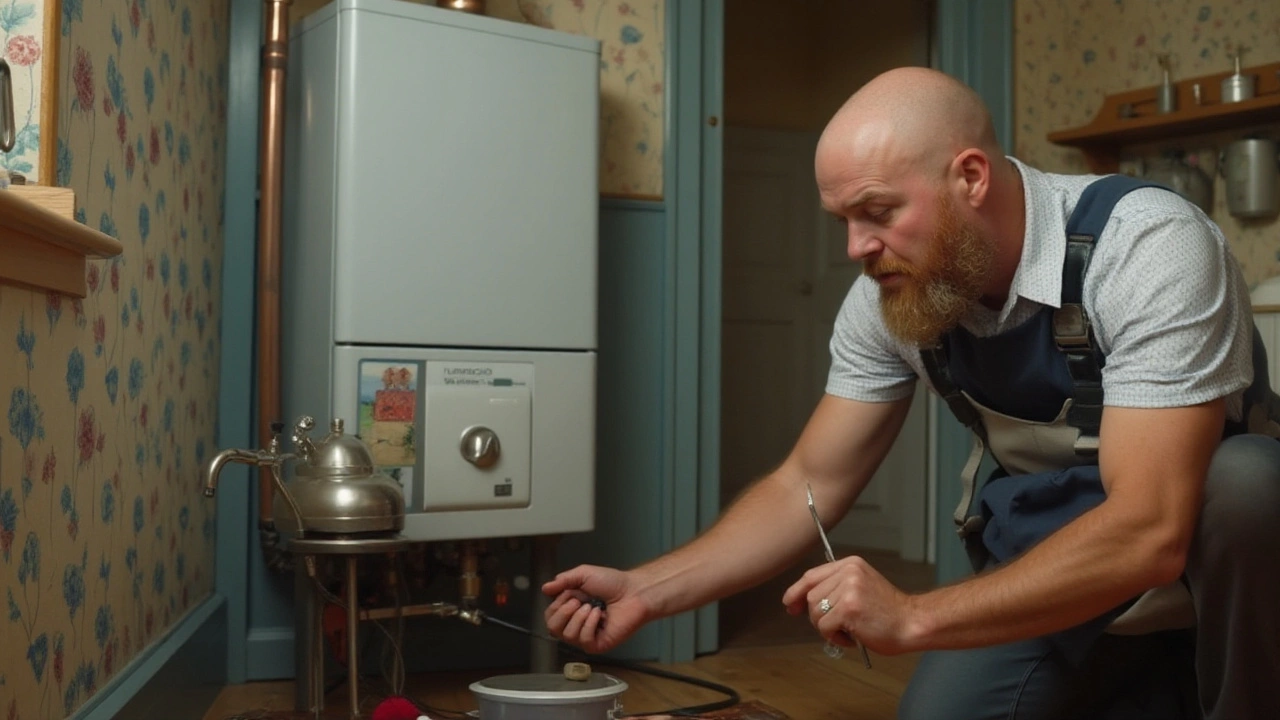
Troubleshooting Water Heater Problems
Tackling water heater problems can save you time and a good deal of discomfort, especially when all you want is a relaxing warm shower. The first step in troubleshooting is understanding how these systems work. Water heaters typically rely on a carefully balanced process that involves heating the water, storing it, and then delivering it through your plumbing. If any part of this process falters, your shower may bear the brunt of it, delivering icy streams instead of the soothing warm water you're expecting.
Now, let’s dive into common culprits. A thermostat that’s been cranked down might lead to cooler water, so checking your heater’s settings can be a straightforward fix. If settings appear fine, think about sediment buildup. Over time, minerals from hard water can develop at the bottom of your tank, obstructing heat transfer and lowering water temperatures. Flushing out your tank annually can curb this problem. Additionally, a faulty dip tube could be sending cold water straight to your shower without allowing it to heat up properly.
Inspecting Your Water Heater
Begin your inspection by listening for unusual sounds from the water heater. Rumbling or banging noises often signify sediment buildup. In this case, it might be time to drain the tank and flush it out. Next, examine the unit and feel for any external leaks, which could point to pressure issues or an aging tank. Remember, this isn’t a do-it-yourself repair when it comes to gas connections or severe leaks—safety first!
"Regular maintenance can extend the life of your water heater significantly," advises the experts at the Australian Plumbers Association. "A little attention now stops bigger problems from cropping up when you least expect them."
Don’t overlook electrical connections if your heater is electric; a tripped circuit breaker or blown fuse can impede performance, an often overlooked reason why your shower may run cold while other faucets offer warmth.
Checking the Valves and Pressure
Valves serve as the gatekeepers of water in your home. A malfunctioning mixing valve, designed to regulate hot and cold water, could cause imbalances between your shower and sink. It’s worth experimenting by toggling these valves to see if the water flow improves. Pressure issues might also originate from shared water lines; if someone runs water elsewhere in the house, it might temporarily rob your shower of hot water. Testing with all water consumptions off ensures you give your water heater a fighting chance to perform at its best.
These steps offer a general sound check for your plumbing and heating system. With patience and a bit of know-how, you might find the underlying problem is simpler than it first appeared—or decide when it’s time to call in the professionals for an expert look.
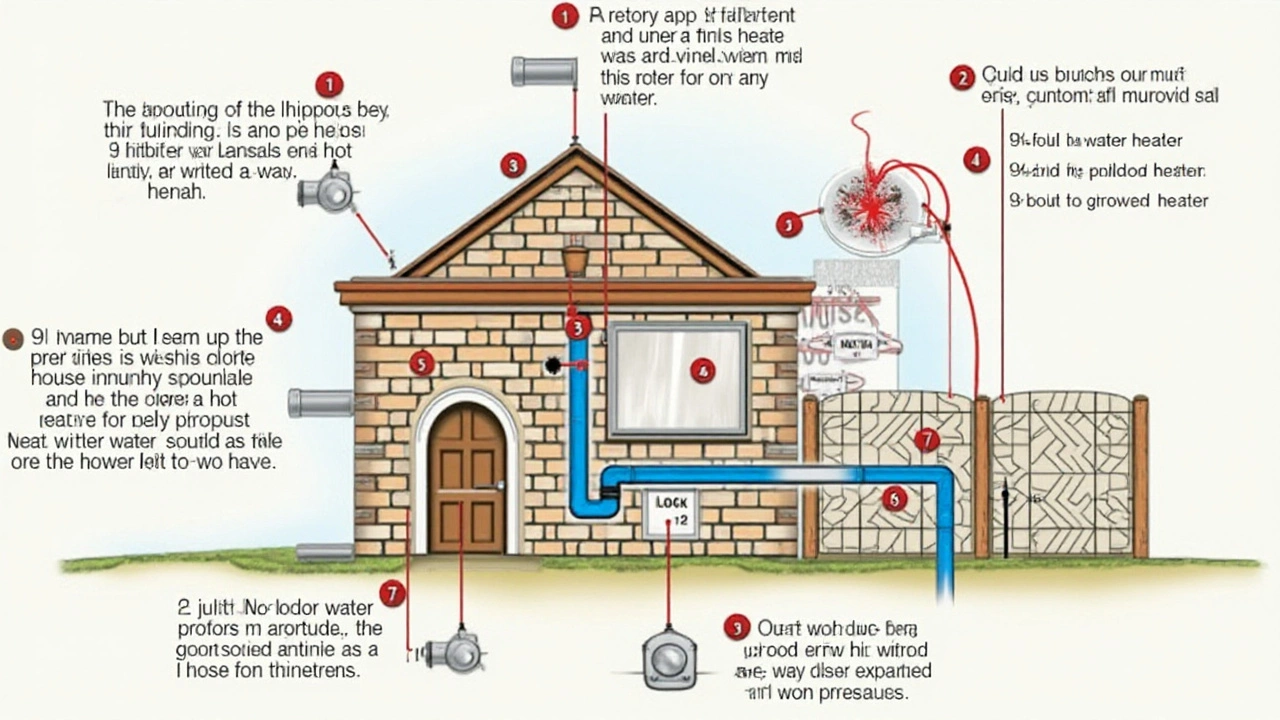
Simple Fixes You Can Try at Home
Sometimes the solution to your hot water conundrum is as simple as a little DIY inspection and maintenance. Before you pick up the phone to call a professional, there are a few tricks you can try to see if you can restore the heat to your shower on your own. The first step is always to check the settings on the water heater. It's easy to overlook the temperature dial as a culprit, but sometimes, whether through an accidental adjustment or a recent power outage, the temperature setting can be knocked off its intended mark. Kick it back to a comfortable level, usually around 49 degrees Celsius, and see if this brings warmth back to your shower.
Next, consider checking the plumbing fix that leads directly to your showerhead. Mineral buildup is a common hurdle, especially in areas with hard water. Once minerals settle into your pipes, water flows at inconsistent temperatures. Take a bit of vinegar and a plastic bag; wrap the bag tightly around the showerhead and let the solution work its magic overnight. A good clean not only helps with water temperature but pressure too. If after this your shower remains insistent on icy blasts, it might be time to delve deeper into the valves.
If you dare, take a look at the mixing valve that does the balancing act of hot and cold water. It's not uncommon for sediment to find its way into valves, hindering their ability to function properly. Ensuring the mixing valve is clean and able to move freely could be the ticket to returning warmth to your shower. Of course, caution is key here; a slip of the hand might cause more harm than good. Assembly and reassembly require a clear head and steady hands to prevent accidental damage to integral components.
Perhaps the most unassuming step with the highest impact is routine maintenance. Regularly flushing your heater to clear out sediments could avoid a plethora of problems, keeping the water flowing hot and steady. Many people overlook this vital step, only coming to terms with its importance when faced with a tepid shower. Remember that simple upkeep today could fend off headaches tomorrow. If you’re still in doubt, a quick perusal of homeowner manuals or online resources could prove enlightening on maintenance steps specific to your model.
According to the Australian Government’s YourHome guide, "Water heating is the second largest segment of household energy use after space heating and cooling..." This highlights the importance of keeping your heating systems effective.
For those who are inclined towards numbers and figures, let's consider a quick numerical representation. A recent study showed that households that performed bi-annual maintenance on their heaters experienced a 30% increase in system efficiency, which means not only resources saved but also a reliable hot shower. This can be handy information to keep at the back of your mind, especially when perusing tips and tricks to keep your bathrooms warm and inviting.
| Frequency of Maintenance | Percentage Increase in Efficiency |
|---|---|
| Bi-Annual | 30% |
| Annual | 15% |
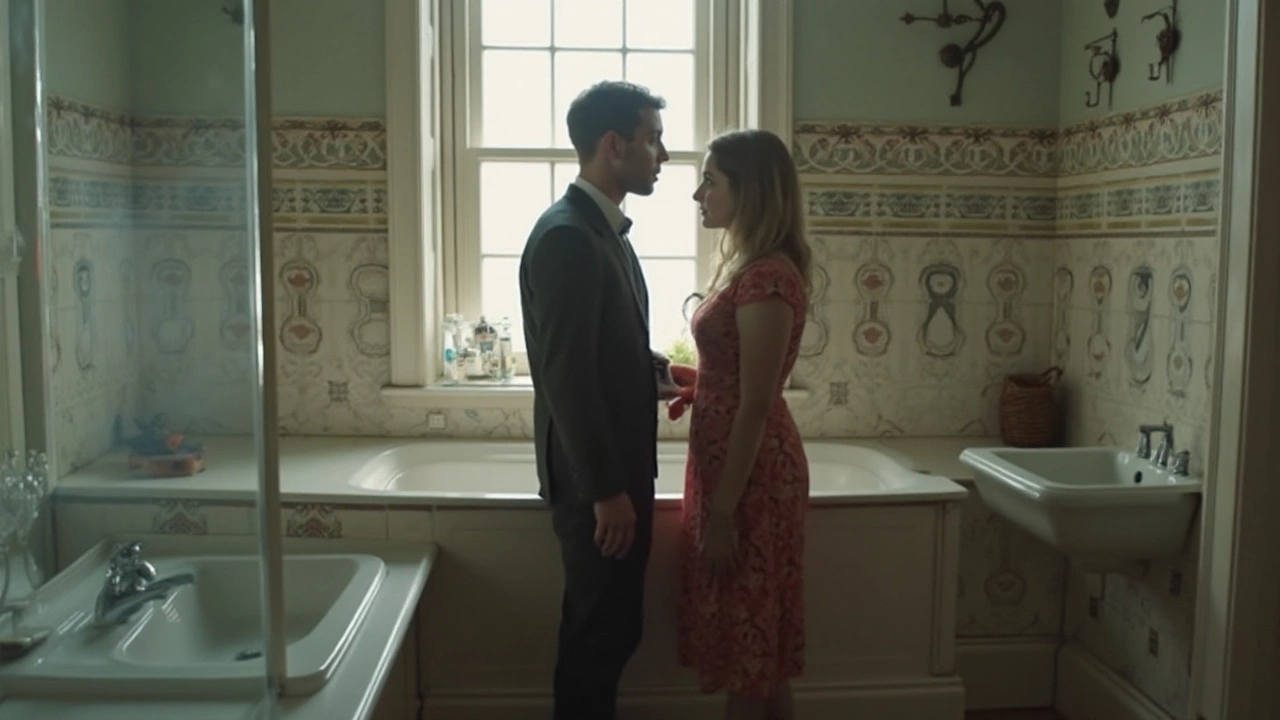
When to Call a Professional
While many hot water inconsistencies can be tackled with a little DIY spirit, there are times when enlisting the help of a professional is the wisest choice. As much as we relish a fix-it-yourself attitude, understanding the complexities of modern water heaters and plumbing systems often requires a trained eye. For instance, if you notice a persistent absence of hot water from your shower despite a heated stream flowing from other outlets like your sink, it might indicate a deeper issue than a simple valve adjustment.
Professionals have specialized tools and expertise to safely diagnose problems that might not be apparent to the untrained. For example, electric or gas-powered water heaters can pose safety hazards due to their high-temperature output and complex control mechanisms. Engaging a skilled technician can ensure your home remains safe and your water heater operates efficiently. Beyond these safety concerns, they can also help identify if the problem stems from the water heater itself or other parts of your plumbing system.
Moreover, consistent low water pressure or water that turns unexpectedly cold could signal issues ranging from sediment buildup in the heater to problematic mixing valves. In such cases, a professional plumber can provide insights that go beyond superficial fixes. In one survey conducted by Water Heater Hub, it was found that nearly 40% of households experiencing chronic hot water issues required professional intervention to remedy their problems permanently. Such stats highlight the importance of knowing when to step back and let the experts take over.
Additionally, engaging a plumber can save you both time and money in the long-run. Misdiagnosing or delaying professional help might worsen the problem, leading to the need for significant, costly repairs or even replacing the entire water heater—not to mention the discomfort of extended cold showers! If your unit is relatively new and under warranty, fixing it yourself might void the agreement, which is yet another reason to consider calling in the pros.
In essence, while tackling hot water problems yourself is admirable, certain signs indicate it's time to call in an expert. These include enduring or severe water temperature fluctuations, visible leaks around the water heater, strange sounds emanating from the unit, or rusty-colored water emerging from your taps. Always remember, ensuring the health of your home’s plumbing system is not only about convenience but also about maintaining peace of mind.

